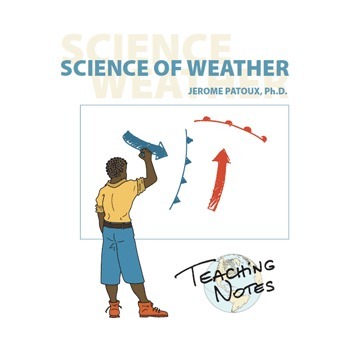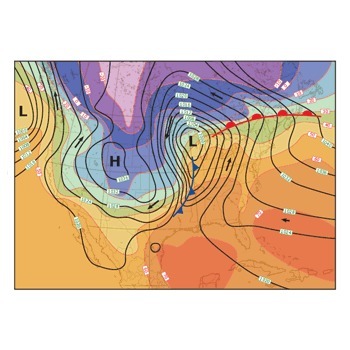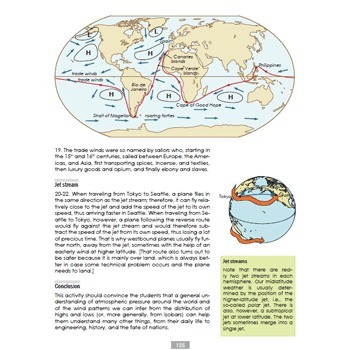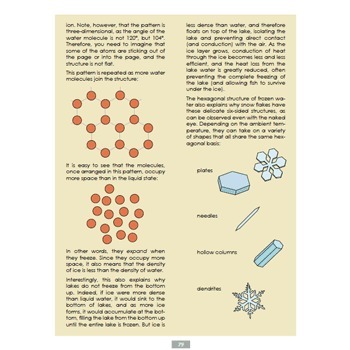Science of Weather - Teaching Notes (5-volume set)
Jerome Patoux
138 Followers
Grade Levels
2nd - 12th, Adult Education, Homeschool
Subjects
Resource Type
Formats Included
- PDF
Pages
904 pages
Jerome Patoux
138 Followers
Description
These are the original Science of Weather teaching notes in digital format, also available in print on amazon. They complement the Science of Weather Student Workbook. (Note that the worksheets are not included in this package.) While the original paper version of the teaching notes was published as 5 separate volumes, this version contains all notes for all 5 series in a single 900-page document. (If you intend to teach only a particular theme or topic in the workbook, you might consider downloading the individual digital extensions WX1 through WX10, which are a breakdown of this document in 10 smaller volumes.)
For a more detailed description of the teaching notes, see the description of the WX1 through WX10 extensions.
About Science of Weather:
Science of Weather is a flexible earth science module for elementary, middle, and high school, supported by the National Science Foundation, and usable as stand-alone curriculum or as a complement to existing weather, climate, and environmental science modules, such as FOSS Air and Weather, FOSS Solar Energy, FOSS Water, FOSS Water Planet, FOSS Weather and Water, STC Weather, STC Catastrophic Events (Understanding Weather and Climate), and It's About Time EarthComm. It consists of a set of hands-on experiments, math applications, reading assignments, review guides, and SAT-style extensions, scaffolded through individual worksheets. The students explore such fundamental concepts in physics and chemistry as density, heat, radiation, pressure, and the composition of the atmosphere. They apply these fundamental concepts to more elaborate atmospheric phenomena, such as wind, convection, and cloud formation. Their learning then culminates into a systemic understanding of the atmosphere and weather at the global scale, with connections to climate and global warming.
The module builds up from the more simple to more elaborate.
The first series introduces some properties of air and some basic facts about the atmosphere. It is useful in laying out the framework for thinking about atmospheric processes at the molecular level, and it also introduces some important facts about carbon dioxide, in preparation for future discussions about the greenhouse effect and global warming.
The next series explores the concepts of conduction and heat in solids, liquids, and gases from a molecular perspective with two main objectives in mind. We first build a thermometer and learn how to create temperature maps. We then explore the notions of air mass and transfer of energy in the atmosphere through the exchange of air masses. This lays the foundations for future discussions about temperature fronts and midlatitude cyclones.
The subsequent series explore the nature of light with a particular interest in infrared radiation. This helps us to understand the information contained in satellite images, a primary tool of weather forecasters and a technology that revolutionized our understanding of the global atmosphere. It also helps us understand the origin of the energy imbalance in the atmosphere, which is really the source of our midlatitude cyclones. Finally, we explore the mechanisms of the greenhouse effect and global warming.
The next series about pressure explore the concept of atmospheric pressure in view of understanding two types of motion in the atmosphere: convection (vertical motion) and wind (horizontal motion). This then is applied in examining cyclones and anticyclones through the construction of pressure maps.
The last series about water concentrate on water vapor and the phase changes leading to the formation of dew and frost. The challenging concepts of relative humidity and dew point temperature are introduced to explain the formation of fog, clouds, and precipitation. All series and all concepts finally converge into a final exploration of hurricanes and tornadoes.
The emphasis of the activities is on hands-on experimentation, class discussions, summarizing, and writing conceptual definitions and explanations. We try to move the students from day-to-day language to scientific language, and toward critical reasoning and writing. In the math applications, students explore a specific aspect of the atmosphere or weather by using mathematical tools. In the map analyses, students learn how to create, using color, contour maps of temperature and pressure. They analyze them in relation to weather patterns. Discussion of current weather can be included and will demonstrate to the students how meteorologists use such maps to forecast the weather. Through short readings and questions, students learn about the atmosphere, weather, related topics, and the history of science. Vocabulary work and concise writing exercises that require scientific explanation accompany the readings. Learning to summarize text and practice SAT-type questions enhance reading and critical analysis. At the end of each series of activities that explore a new concept, teacher and students work together to summarize the essential points of those activities. Finally, students study by playing a board game in which they answer questions from flash cards. The questions are based on material covered in each series of the module.
The module is aligned with the national standards. The alignment is made explicit for each activity in the Teaching Notes.
For more information, visit www.scienceofweather.org
Science of Weather is licensed under a Creative Commons Attribution-NonCommercial-NoDerivs 3.0 Unported License.
For a more detailed description of the teaching notes, see the description of the WX1 through WX10 extensions.
About Science of Weather:
Science of Weather is a flexible earth science module for elementary, middle, and high school, supported by the National Science Foundation, and usable as stand-alone curriculum or as a complement to existing weather, climate, and environmental science modules, such as FOSS Air and Weather, FOSS Solar Energy, FOSS Water, FOSS Water Planet, FOSS Weather and Water, STC Weather, STC Catastrophic Events (Understanding Weather and Climate), and It's About Time EarthComm. It consists of a set of hands-on experiments, math applications, reading assignments, review guides, and SAT-style extensions, scaffolded through individual worksheets. The students explore such fundamental concepts in physics and chemistry as density, heat, radiation, pressure, and the composition of the atmosphere. They apply these fundamental concepts to more elaborate atmospheric phenomena, such as wind, convection, and cloud formation. Their learning then culminates into a systemic understanding of the atmosphere and weather at the global scale, with connections to climate and global warming.
The module builds up from the more simple to more elaborate.
The first series introduces some properties of air and some basic facts about the atmosphere. It is useful in laying out the framework for thinking about atmospheric processes at the molecular level, and it also introduces some important facts about carbon dioxide, in preparation for future discussions about the greenhouse effect and global warming.
The next series explores the concepts of conduction and heat in solids, liquids, and gases from a molecular perspective with two main objectives in mind. We first build a thermometer and learn how to create temperature maps. We then explore the notions of air mass and transfer of energy in the atmosphere through the exchange of air masses. This lays the foundations for future discussions about temperature fronts and midlatitude cyclones.
The subsequent series explore the nature of light with a particular interest in infrared radiation. This helps us to understand the information contained in satellite images, a primary tool of weather forecasters and a technology that revolutionized our understanding of the global atmosphere. It also helps us understand the origin of the energy imbalance in the atmosphere, which is really the source of our midlatitude cyclones. Finally, we explore the mechanisms of the greenhouse effect and global warming.
The next series about pressure explore the concept of atmospheric pressure in view of understanding two types of motion in the atmosphere: convection (vertical motion) and wind (horizontal motion). This then is applied in examining cyclones and anticyclones through the construction of pressure maps.
The last series about water concentrate on water vapor and the phase changes leading to the formation of dew and frost. The challenging concepts of relative humidity and dew point temperature are introduced to explain the formation of fog, clouds, and precipitation. All series and all concepts finally converge into a final exploration of hurricanes and tornadoes.
The emphasis of the activities is on hands-on experimentation, class discussions, summarizing, and writing conceptual definitions and explanations. We try to move the students from day-to-day language to scientific language, and toward critical reasoning and writing. In the math applications, students explore a specific aspect of the atmosphere or weather by using mathematical tools. In the map analyses, students learn how to create, using color, contour maps of temperature and pressure. They analyze them in relation to weather patterns. Discussion of current weather can be included and will demonstrate to the students how meteorologists use such maps to forecast the weather. Through short readings and questions, students learn about the atmosphere, weather, related topics, and the history of science. Vocabulary work and concise writing exercises that require scientific explanation accompany the readings. Learning to summarize text and practice SAT-type questions enhance reading and critical analysis. At the end of each series of activities that explore a new concept, teacher and students work together to summarize the essential points of those activities. Finally, students study by playing a board game in which they answer questions from flash cards. The questions are based on material covered in each series of the module.
The module is aligned with the national standards. The alignment is made explicit for each activity in the Teaching Notes.
For more information, visit www.scienceofweather.org
Science of Weather is licensed under a Creative Commons Attribution-NonCommercial-NoDerivs 3.0 Unported License.
Total Pages
904 pages
Answer Key
Included
Teaching Duration
N/A
Report this resource to TPT
Reported resources will be reviewed by our team. Report this resource to let us know if this resource violates TPT’s content guidelines.





